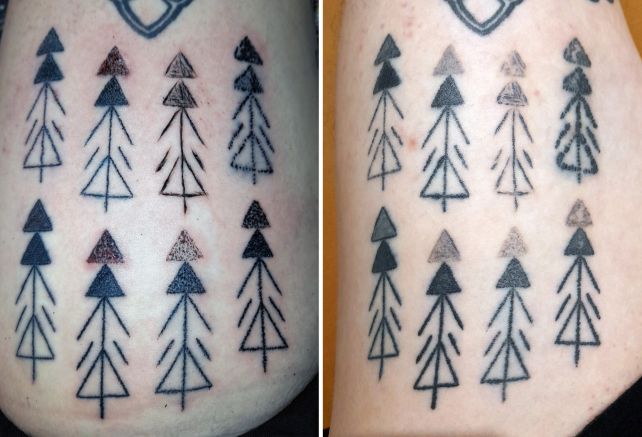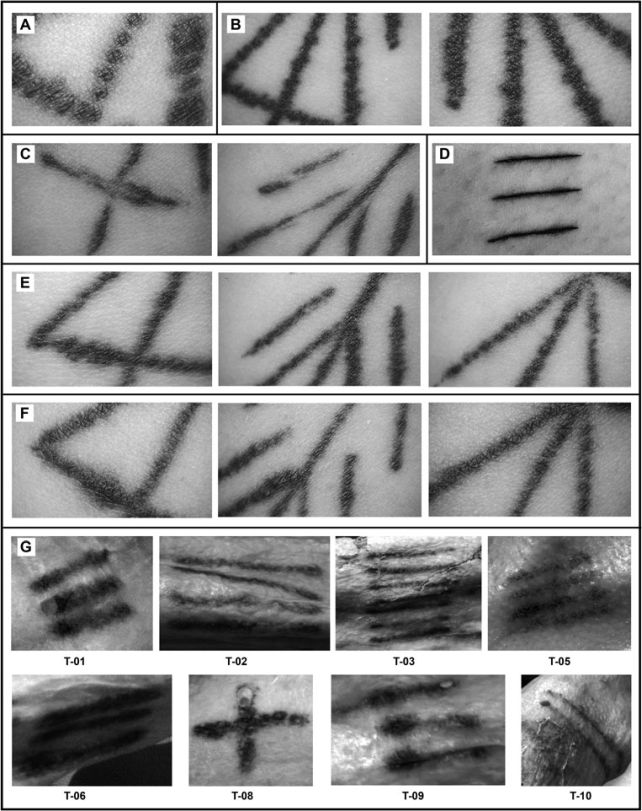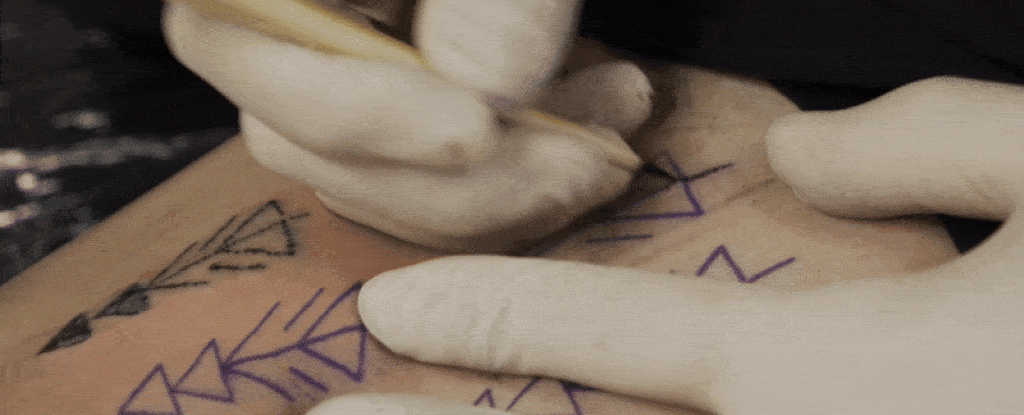A man who died around 5,300 years ago was tattooed using methods fascinatingly similar to modern ones.
Ötzi the Iceman, whose exceptionally mummified remains were found decades ago in a glacier in the Ötztal Alps, was covered in tattoos. Scientists carefully studying his remains have counted 61 carbon pigment markings on his lower back, abdomen, left wrist, and lower legs.
The accepted explanation for the application of these tattoos was soot rubbed into cuts made in Ötzi's skin. Now, a team of scientists and tattoo artists has called this into significant question. How? By creating tattoos with different methods, letting them heal, and comparing the results with the tattoos on Ötzi.
"One early discussion of the Iceman's marks proposed that they weren't traditional tattoos, but instead places where plant matter had been packed into incised wounds and then set on fire," archaeologist Aaron Deter-Wolf of the Tennessee Division of Archaeology told ScienceAlert.
"There's absolutely no proof of that, and over time the bit about fire got left behind, but the idea of their being incised persisted. Most of the archaeologists who have discussed Ötzi's tattoos in recent years are upfront that we don't know how they were made - but the idea still appears in just about every popular media discussion.
"I think this reflects a general perception that cutting with stone tools is the oldest form of tattooing. There's no specific archaeological data to support that idea, but there's also nothing that disproves it."

Because human skin doesn't tend to survive the ravages of millennia, the archaeological record doesn't have much of it. However, the samples we do have are tattooed more often than you might think. Combined with ancient tattooing tools archaeologists have found, the evidence suggests that tattoos were not uncommon in prehistoric times.
We don't know a lot about the ancient practice of tattooing. We don't know why it was performed – whether it had some spiritual significance, or if our ancestors just thought they looked sick as. Scientists have speculated that Ötzi's tattoos may have been medicinal, a type of early acupuncture, but we just can't be sure.
What we can do is look at the physical evidence we do have, and work out how the tattoos were made.

Deter-Wolf and his colleagues, tattoo artists Danny Riday of The Temple Tattoo in New Zealand and Maya Sialuk Jacobsen of Inuit Tattoo Traditions in Denmark, conducted a 2022 study using eight different tools across four different tattooing techniques to inscribe a repeated identical motif on Riday's leg.
These included tools made of animal bone, obsidian, copper, boar tusk, and a modern steel needle. The techniques consisted of hand-tapping, hand-poking, incision, and subdermal tattooing, in which a piece of bone is poked through the skin and out through a second puncture to place ink under the skin.
The researchers then carefully documented the healing process, the healed scars, and the appearance of each tattoo over time. This provided a database against which they could compare ancient tattoos for their new study.

"Every time a tattooing tool breaks the skin it makes a small wound, and all wounds have distinctive traits that depend on how they were created," Deter-Wolf explains.
"Puncture tattooing leaves wounds that generally mirror the profile of the tool tip, and so wounds tend to be circular. To tattoo a solid line you overlap separate punctures, which under magnification gives the edges an irregular shape.
"That's a completely different signature from incision wounds and incision tattoos, both of which have straight, clean edges where the skin was sliced by a blade. Also the ends of an incision wound are thin and tapered where uncut tissue pulls the skin back together. That doesn't happen in puncture tattooing."
Other studies have imaged Ötzi's tattoos in detail. When the team looked at Riday's and Ötzi's tattoos side-by-side, they knew they had a case, Deter-Wolf says.
So they set about comparing the markings on Riday's leg and those on Ötzi's desiccated skin. In addition, Riday performed more tattoos on himself, copying a cluster of marks on Ötzi's skin using several techniques, and they compared those, too.

And they found that, contrary to the accepted explanation, the tattoos on Ötzi were probably not made with the incision technique. Instead, the physical properties of the tattoos – stippling, line widths, rounded ends, and the diffusion of ink at the edges – most closely match hand-poking with a single-pointed tool.
"We ultimately proposed that Ötzi's tattoos were made by puncture, likely using either a bone or copper awl," Deter-Wolf tells ScienceAlert.
"Those types of artifacts appear in the archaeological record of the region, but none have ever been identified as tattooing tools. We hope this paper will inspire archaeologists to reassess how artifacts may have been used, and maybe discover actual Copper Age tattooing tools!"
And, perhaps, rethink some of our assumptions about 'primitive' humans. Seems tattooing techniques in the Chalcolithic weren't so crude after all.
The research has been published in the European Journal of Archaeology.
